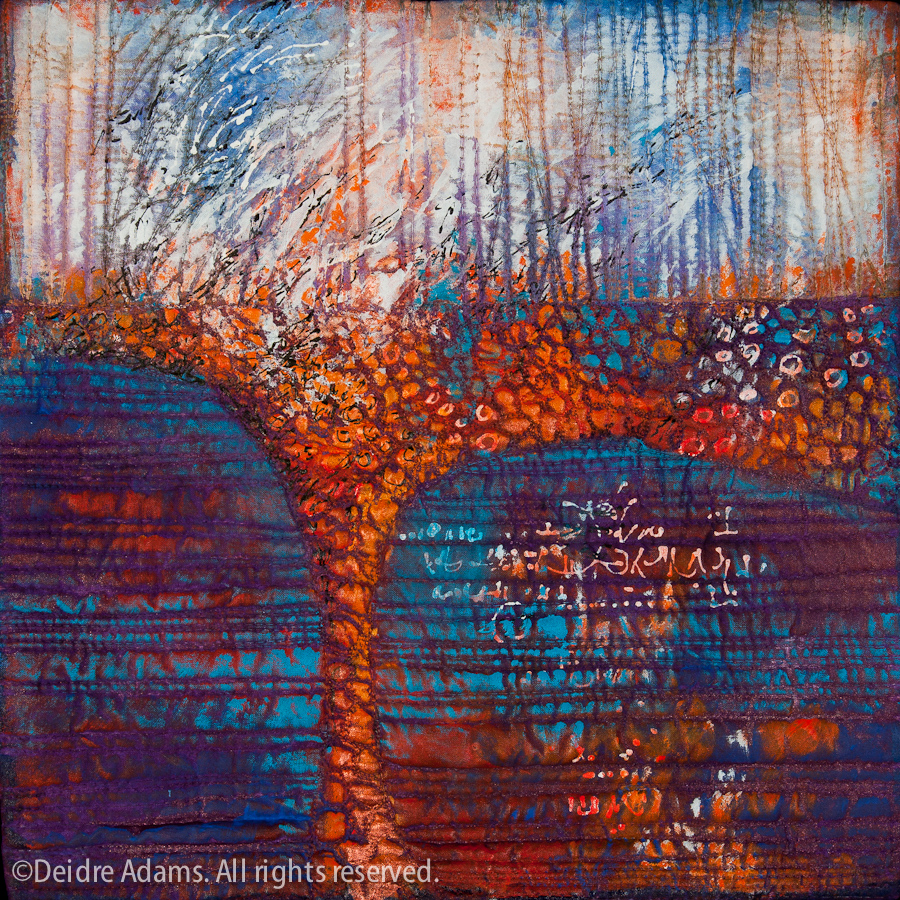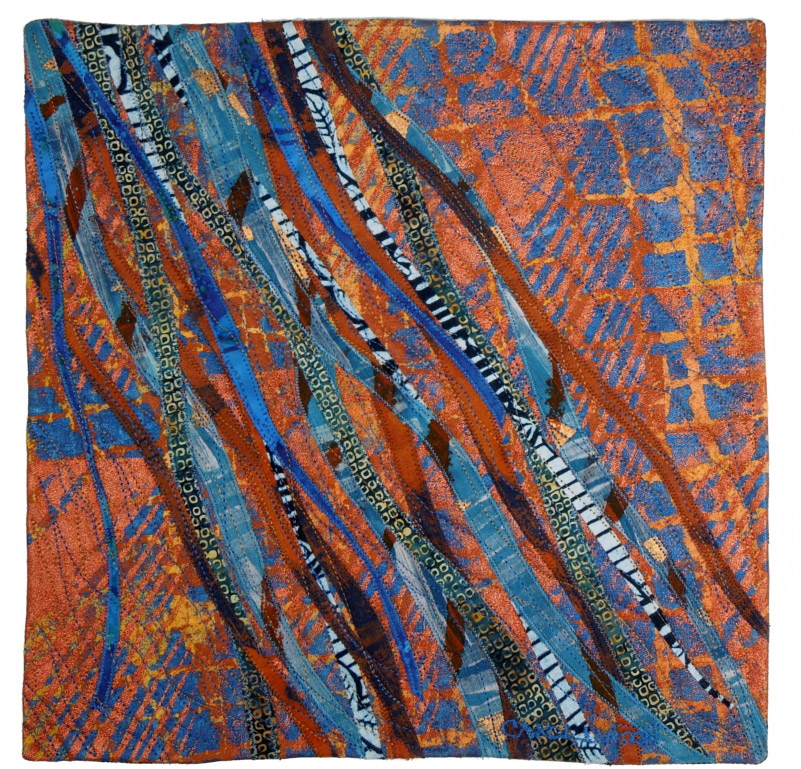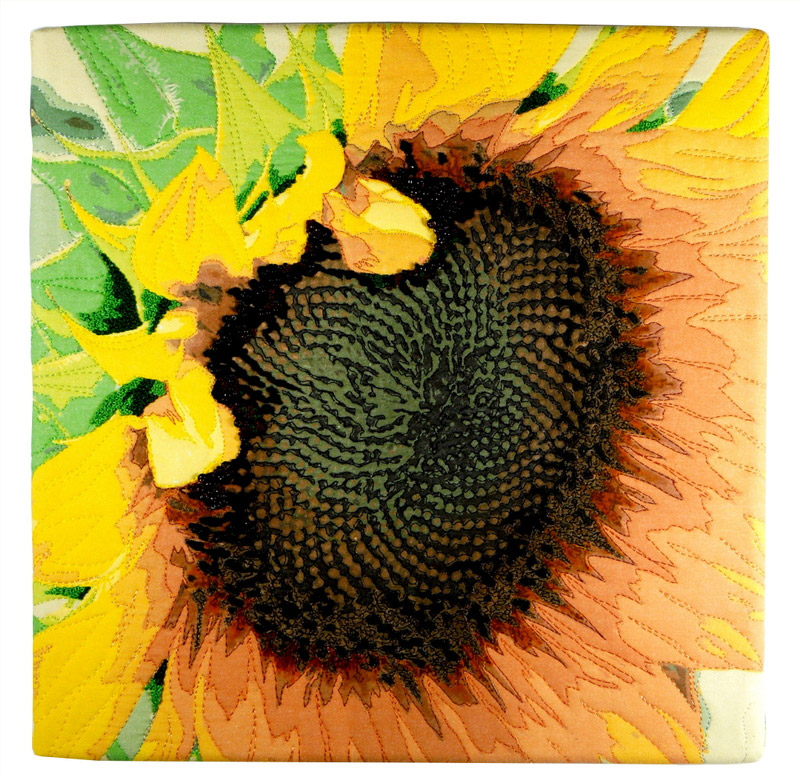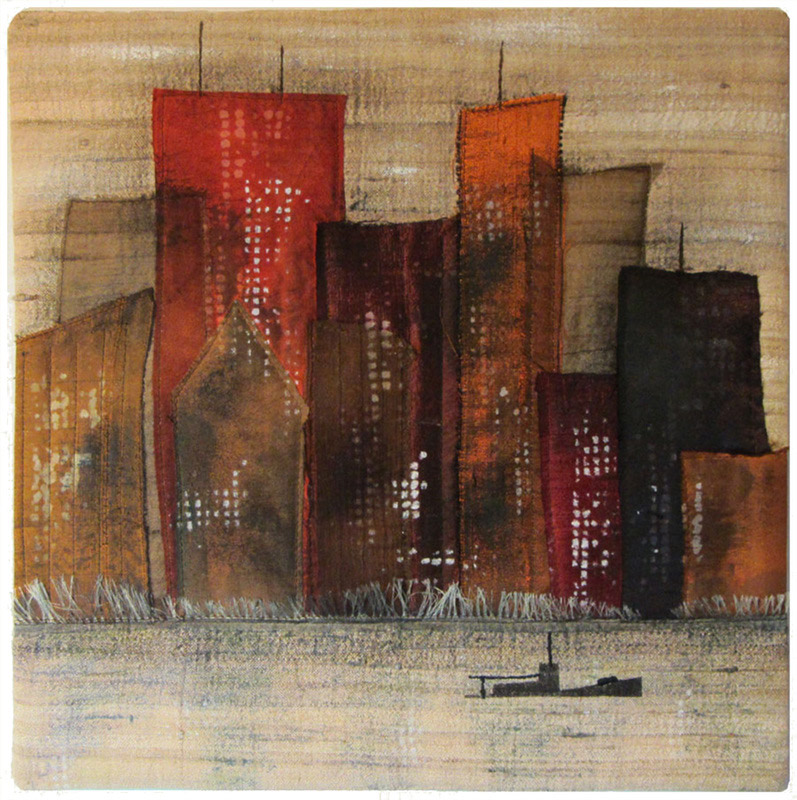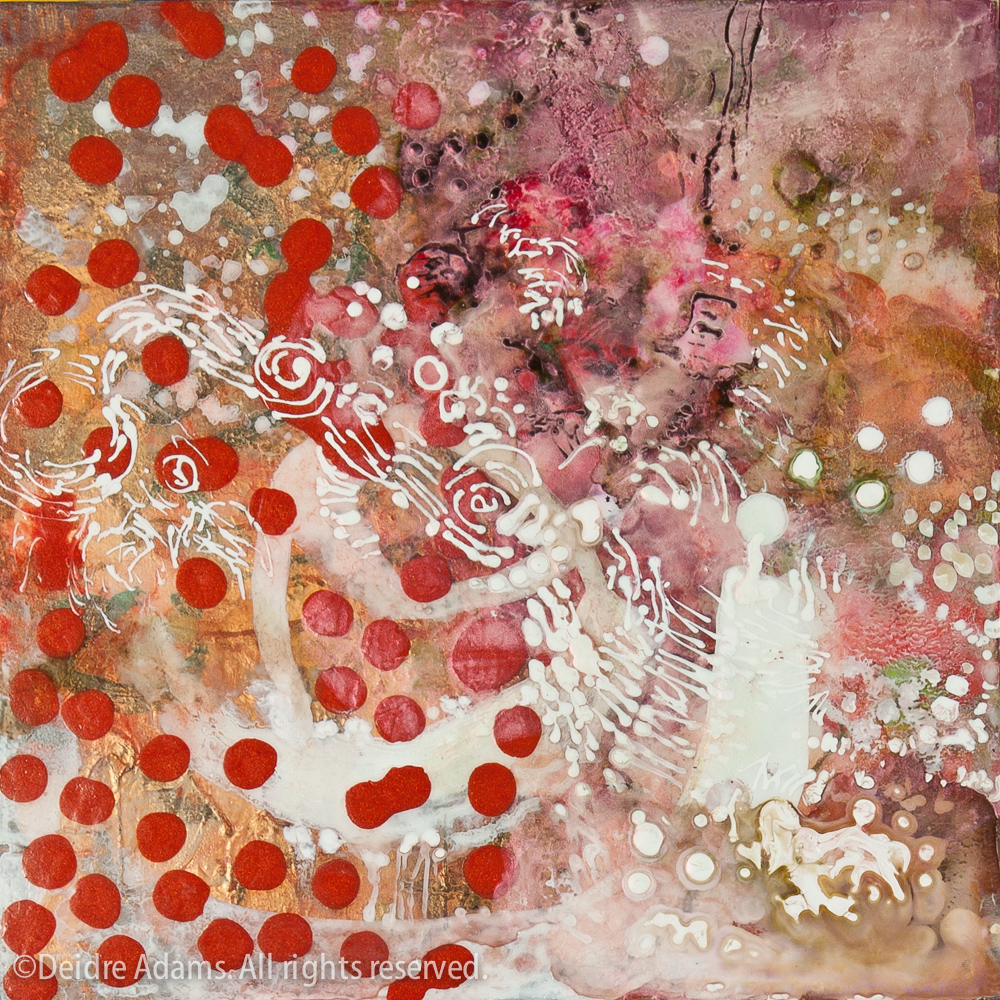 Primordial No. 1, 8 x 8 inches, acrylic & mixed media on panel – ©2012 Deidre Adams
Primordial No. 1, 8 x 8 inches, acrylic & mixed media on panel – ©2012 Deidre Adams
Like a lot of artists, I’m very big on reading. In the past couple of years, I’ve gradually changed from reading fiction to being more interested in books on politics and science. Lately I’ve been reading a lot of articles written for the general public on various science subjects like biology, physics, chemistry, and neuroscience. Some writers have the knack of making science especially interesting and accessible. I’ve really been enjoying the books on the brain by V.S. Ramachandran, a prominent neuroscientist who has contributed important advances in the field by studying people with brain injuries.
All of these readings have been percolating in my mind and have begun to influence my paintings without me really thinking about it too much. I work very abstractly, never trying to make a conscious representation of any one thing. But in a series of small paintings I started last year, I realized that a lot of them have a look of cells or small organisms swimming about in liquid fields.
I decided to call the series Primordial, after the theory of “primordial soup,” first introduced by biologists Alexander Oparin and J.B.S. Haldane in the 1920s. It is one theory of how life came to exist on a planet that was originally just a big ball covered with gases and chemicals.
The theory is summarized as follows:
- The early Earth had a chemically reducing atmosphere.
- This atmosphere, exposed to energy in various forms, produced simple organic compounds (“monomers“).
- These compounds accumulated in a “soup”, which may have been concentrated at various locations (shorelines, oceanic vents etc.).
- By further transformation, more complex organic polymers – and ultimately life – developed in the soup.
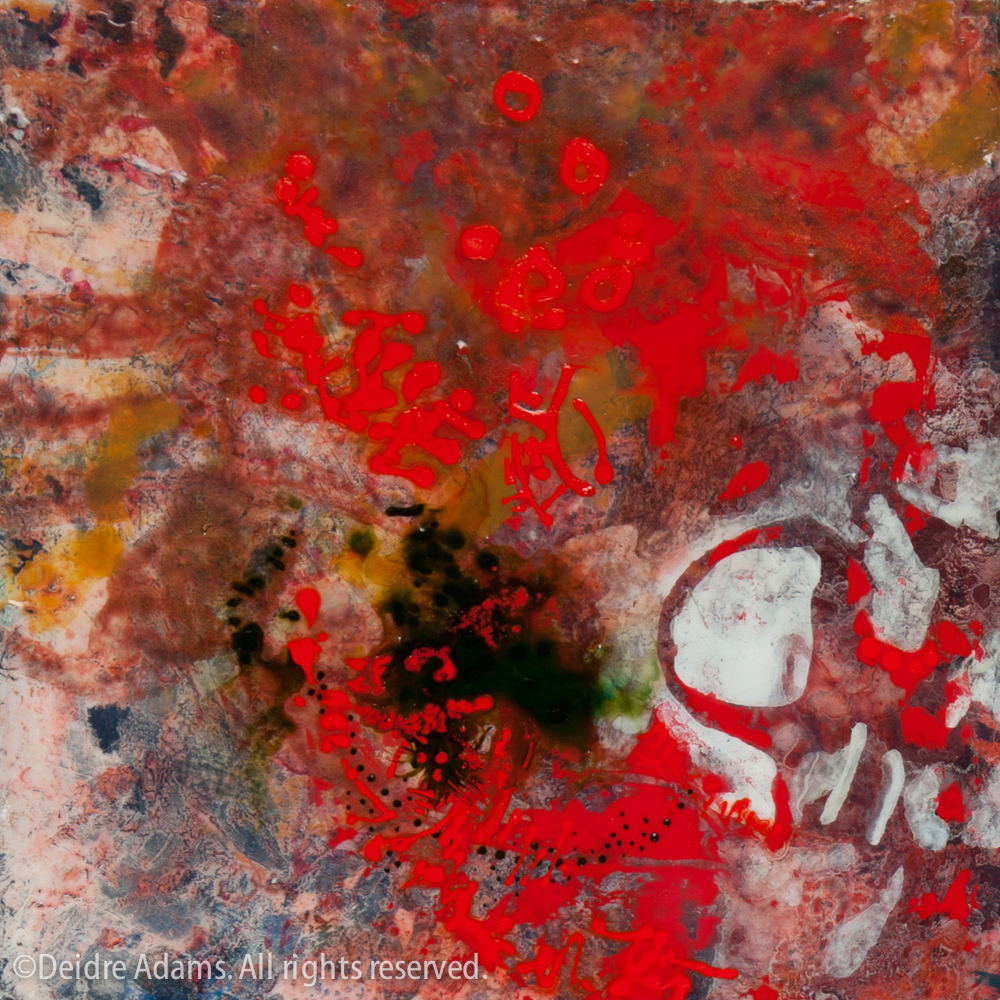 Primordial No. 2, 8 x 8 inches, acrylic & mixed media on panel – ©2012 Deidre Adams
Primordial No. 2, 8 x 8 inches, acrylic & mixed media on panel – ©2012 Deidre Adams
Of course, nothing in science is ever settled. Now some are challenging the theory and presenting alternate theories. I still like the idea of it, though, so I’m keeping the name.
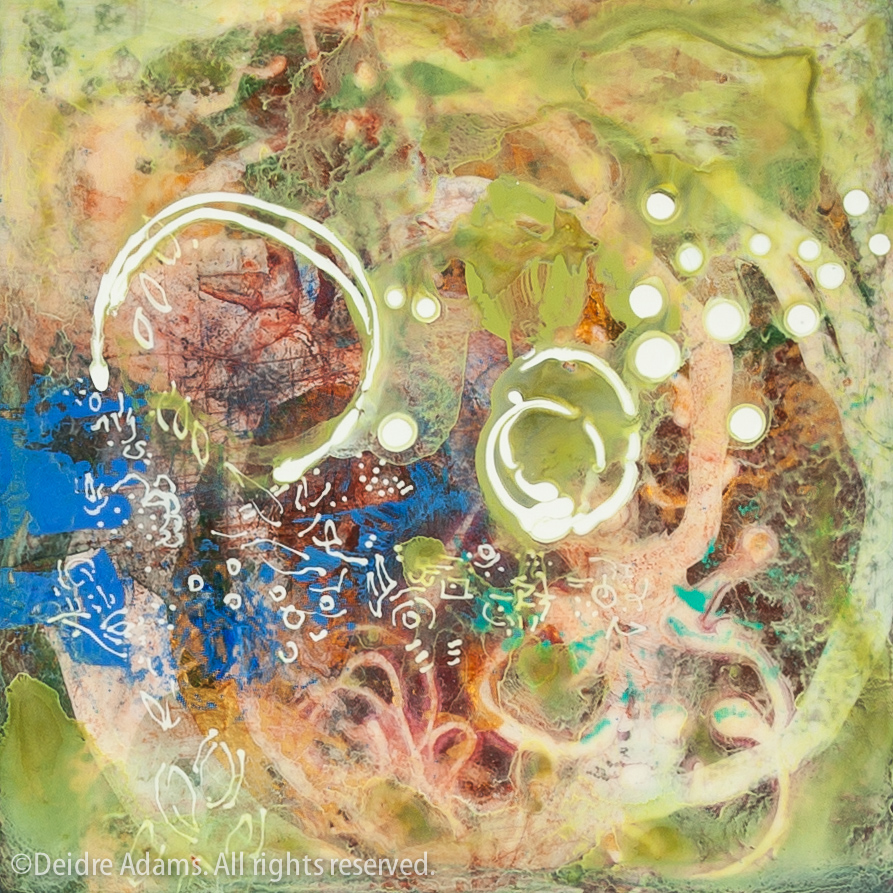 Primordial No. 5, 8 x 8 inches, acrylic & mixed media on panel – ©2012 Deidre Adams
Primordial No. 5, 8 x 8 inches, acrylic & mixed media on panel – ©2012 Deidre Adams
Here’s something I struggle with: these paintings are really small, but when I post them large like this, it makes them seem like really big paintings – especially Primordial No. 1 (top). I rather wish I could do this exact same painting at ten times the size. But when I work large, I can’t reproduce the same kinds of marks that I do on the small ones. Something about the energy and dynamics of mark-making is completely changed with scale. It’s something to work on for the future.
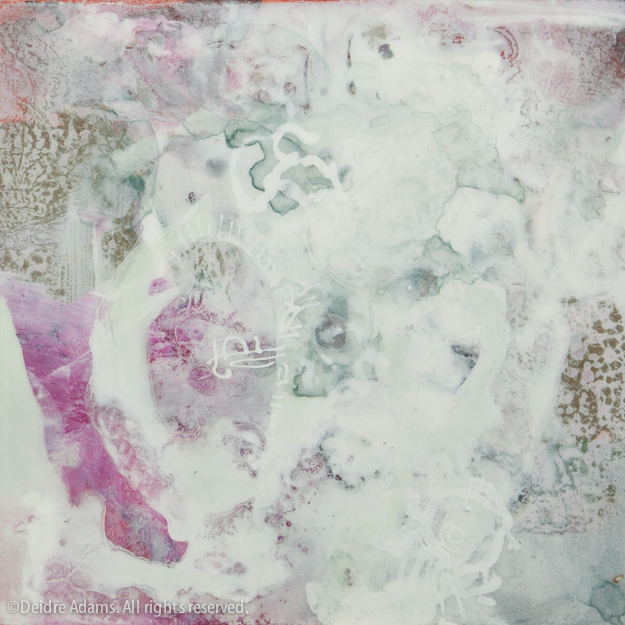 Primordial No. 3, 8 x 8 inches, acrylic & mixed media on panel – ©2012 Deidre Adams
Primordial No. 3, 8 x 8 inches, acrylic & mixed media on panel – ©2012 Deidre Adams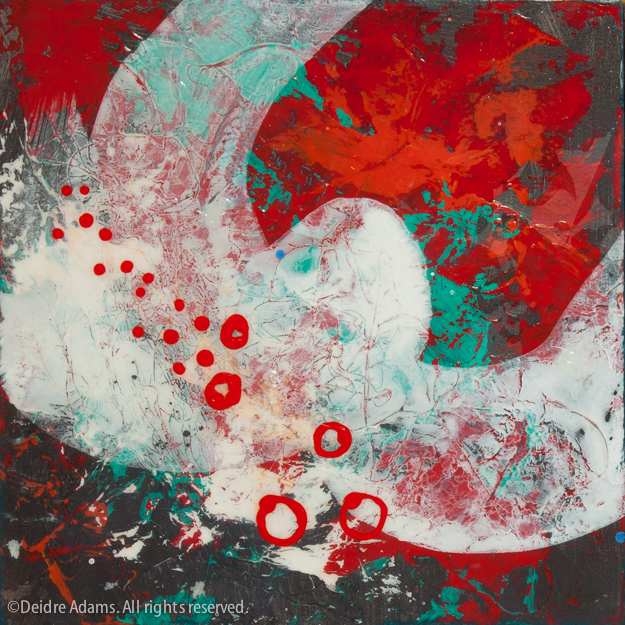 Primordial No. 11, 8 x 8 inches, acrylic & mixed media on panel – ©2012 Deidre Adams
Primordial No. 11, 8 x 8 inches, acrylic & mixed media on panel – ©2012 Deidre Adams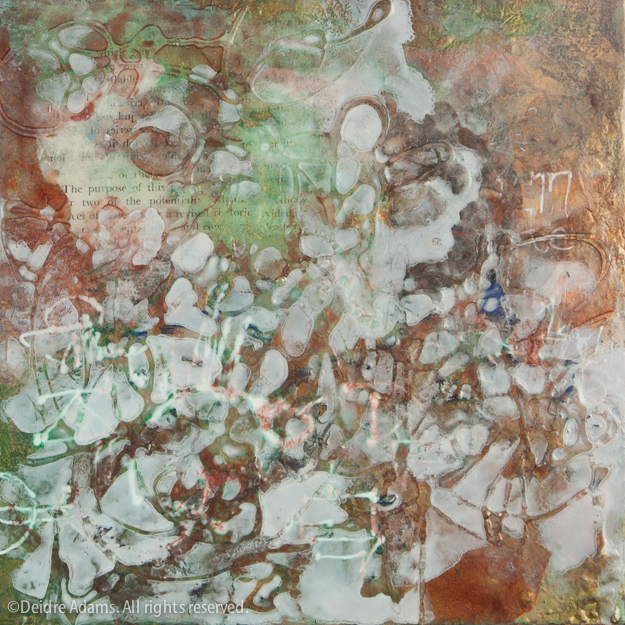 Primordial No. 9, 8 x 8 inches, acrylic & mixed media on panel – ©2012 Deidre Adams
Primordial No. 9, 8 x 8 inches, acrylic & mixed media on panel – ©2012 Deidre Adams




